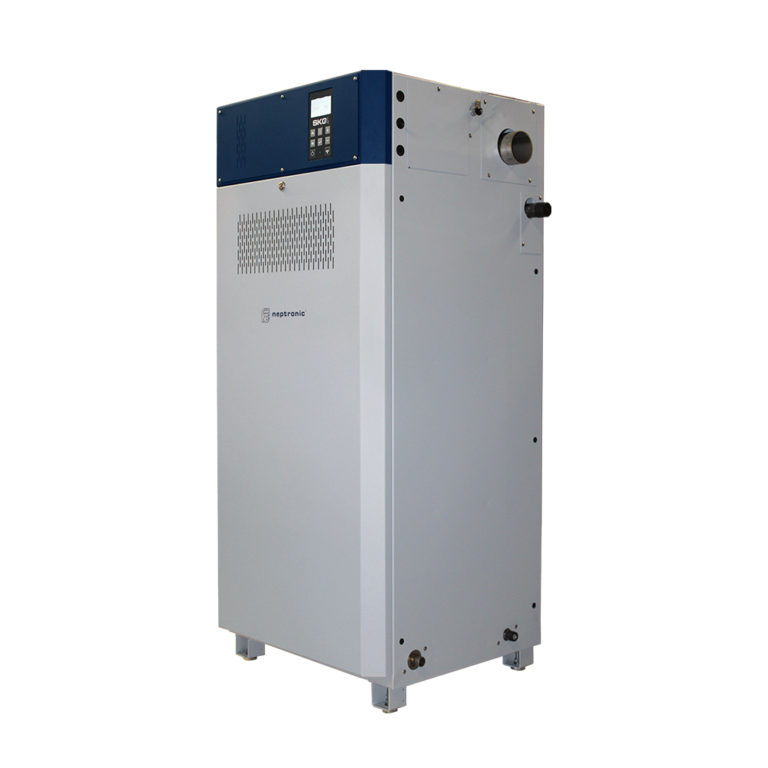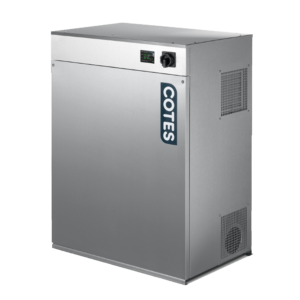
By now it’s a very well established fact that humidity control is more than just a luxury – it’s an essential in almost every building. From health and wellbeing to manufacturing, printing, hospitals, museums and even office spaces, just to name a few. We’ve talked extensively in the past about the benefits correct humidification can bring, and how critical it can be for some industries to get it right. And yet we see humidification consistently overlooked, or acknowledged but not installed, which means many businesses find themselves needing to retro-fit a humidification system into their building. And for that, one of the best options is steam.
Why Humidification Matters
Humidification might often be overlooked, but it is one of the most important elements in creating a good working environment, and in protecting your investments.
For example, In general, the human body is most comfortable when the relative humidity of the room ranges between 20% and 60%. The recommended average relative humidity for an indoor area is around 30-50%, when the outside temperature anything above 0. If your rH goes above 60%, you will start to get mould and mildew forming, which creates its own range of health problems for your employees. Similarly, if your rH goes below 30%, you are open to more health risks. For example, rH of 30% or lower can cause static electricity problems, irritations of the skin, dry eyes and drying out of the mucous membrane, which leads to upper respiratory illnesses among staff.
Humidity also has an impact on your equipment – if the humidity is off in a space you increase the risk of static shocks and electrostatic build up, which will cause damage to your electronics. Manufacturing processes are very sensitive to humidity changes, so it can also have a big impact on any products you create, like paper, meats or even batteries. Plus, with humidity directly tied to how you perceive the temperature in a space, meaning that if you get the humidity right, you can actually reduce the need to run the heating as much, reducing costs for your business.
The Awareness Is There
The ironic thing is, when we are working with companies to create a humidification system, the building is often already waiting for one. We’ll look at the building specifications, and there will be a note or an area labelled ‘a space should be left for humidification to be added at a later date if needed’. But the humidification solution itself isn’t included at all. And it doesn’t take long for the occupants of the space to realise they need humidification, once it’s up and running. That’s one of the reasons retro-fitting humidification systems is still so common.
Why Self-Generating Steam Is The Answer
Whenever space restrictions are an issue (which is usually the case when buildings have been designed and built without a humidification system in place), it’s self-generating steam that tends to be the best solution. In general, there are two types of self-generating steam humidifiers:
- Electrode Steam Humidifiers: These work by bringing potable water to a boiling point by passing a current between electrodes within a disposable plastic cylinder. The cylinders are easily and quickly replaced as and when required, depending on the hours run and the water quality. The capacity of the unit will depend on the size of the cylinder and the rated voltage and kW of the humidifier, with outputs from 2 to 110 kg/hr. Electrode boilers are relatively easy to install, since they only need power, a water supply and suitable drain. The units themselves can be controlled directly using a sensor, or controlled using the BMS. This is still the most widely used steam humidifier on the market, mainly because they are low cost, easy to maintain and very reliable.
- Resistive Element Humidifiers: These humidifiers use electric, self-cleaning, immersion heating elements to raise the temperature of the water to a boiling point within a permanent stainless steel evaporation chamber. Reach immersion heater has a specific power rating (KW) at a specific voltage, and will raise the temperature of the water within the evaporation chamber completely independently. This means the system works just as well with purified water and portable water. These humidifiers have a similar capacity to the electrode boiler type, and can also be controlled via sensor or BMS.
In both styles of self-generating steam humidifiers, the steam is introduced into the AHU or duct by stainless steel steam lances designed to provide good air flow, but still fit into even the tightest of spaces. The way these systems are designed allows you to not only to have better control over your humidity, but can save you a considerable amount on your energy bills. Of course, self-generating steam humidification isn’t always the right solution, but it’s often a more appropriate option than you would think, and should be considered when choosing your humidity system.
If you’re not sure what you need, or is self-generating steam humidification would work for you, we recommend you speak to a humidity control specialist. At Humidity Solutions, we specialise in all forms of humidification systems, and design bespoke solutions to suit your specific needs and space. For more information, or to book your free consultation with us, just get in touch with the team today.
At Humidity Solutions, we provide specialist advice, installation and maintenance for humidity control systems for all applications. We have years of experience working with manufacturing plants to ensure their environment is safe and well controlled. We have a variety of case studies on this solution, which you can read here, or just get in touch with the team today to ask any questions and find out more.

